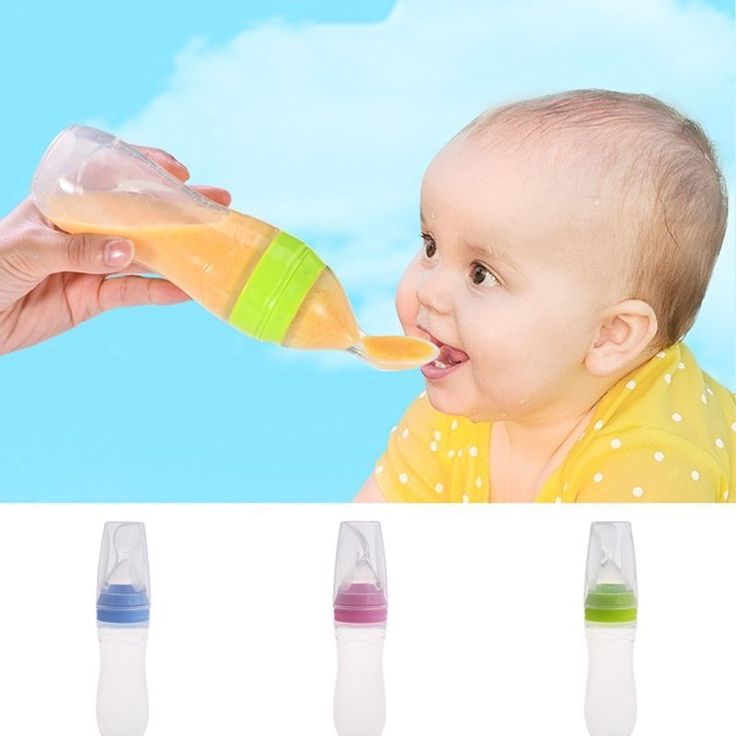How to combination feed baby
How to combine breast and bottle feeding
It can take several weeks for you and your baby to feel happy and confident with breastfeeding.
Once you've both got the hang of it, it's usually possible to offer your baby bottles of expressed milk or formula alongside breastfeeding.
This is sometimes called mixed or combination feeding.
Why combine breast and bottle?
You may want to combine breastfeeding with bottle feeding if you:
- are breastfeeding and want to use a bottle to offer your baby some expressed breast milk
- want to breastfeed for some of your baby's feeds, but give bottles of formula for 1 or more feeds
- are bottle feeding your baby and want to start breastfeeding
- need to leave your baby and want to make sure they have some milk while you're away
Introducing formula feeds can affect the amount of breast milk you produce. There is also a small amount of evidence to show babies may not breastfeed as well because they learn to use a different kind of sucking action at the bottle than at the breast.
These things can make breastfeeding more difficult, especially in the first few weeks when you and your baby are still getting comfortable with breastfeeding.
Your breastmilk supply will usually not be affected if you start bottle feeding your baby when they are a bit older, you are both comfortable with breastbeeding, and you breastfeed every day.
Introducing formula feeds
If you're combining breastfeeding with formula feeds both you and your baby can carry on enjoying the benefits of breastfeeding.
If you choose to introduce infant formula:
- it's best to do it gradually to give your body time to reduce the amount of milk it makes – this helps lower your chance of getting uncomfortable, swollen breasts, or mastitis
- if you're going back to work, start a few weeks beforehand to give both of you time to readjust
- if your baby is 6 months old or more and can drink milk from a cup, you may not need to introduce a bottle at all
For more information, see drinks and cups for babies.
Giving your baby their first bottle
It may take a while for a breastfed baby to get the hang of bottle feeding, because they need to use a different sucking action.
- it usually helps to give the first few bottles when your baby is happy and relaxed – not when they're very hungry
- it may help if someone else gives the first bottle feeds, so that your baby is not near you and smelling your breast milk
- you might want to try using a different position for bottle and breastfeeding
See more advice on how to bottle feed.
Restarting breastfeeding
If you want to start breastfeeding more and give your baby fewer bottles, it's a good idea to ask your midwife, health visitor or breastfeeding supporter for support.
These tips may help too:
- Hold and cuddle your baby as much as possible, ideally skin to skin. This will encourage your body to make milk and your baby to feed.

- Express your breast milk regularly. Expressing releases the hormone prolactin, which stimulates your breasts to make milk. About 8 times a day, including once at night is ideal. It may be easier to express by hand to begin with – your midwife, health visitor or breastfeeding supporter can show you how.
- Try bottlefeeding while holding your baby skin to skin and close to your breasts.
- If your baby is latching on, feed little and often. Do not worry if your baby does not feed for long to begin with. See tips on how to get your baby properly positioned and attached.
- Choose times when your baby is relaxed, alert and not too hungry, and do not force your baby to stay at the breast.
- Decrease the number of bottles gradually, as your milk supply increases.
- Consider using a lactation aid (supplementer). A tiny tube is taped next to your nipple and passes into your baby's mouth so your baby can get milk via the tube as well as from your breast.
 This helps to support your baby as they get used to attaching to the breast. Your midwife, health visitor or breastfeeding supporter can give you more information.
This helps to support your baby as they get used to attaching to the breast. Your midwife, health visitor or breastfeeding supporter can give you more information.
See more tips on boosting your milk supply.
Help and support with mixed feeding
If you have any questions or concerns about combining breast and bottle feeding:
- talk to your midwife, health visitor or breastfeeding supporter
- call the National Breastfeeding Helpline on 0300 100 0212 (9.30am to 9.30pm, every day)
- find breastfeeding support near you
Video: why combine breast and bottle feeding?
In this video, 3 mothers discuss ways to combine breast and bottle feeding.
Media last reviewed: 22 March 2020
Media review due: 22 March 2023
Page last reviewed: 8 October 2019
Next review due: 8 October 2022
Here's how to do combination feeding with your baby
Should I breastfeed or bottle-feed? That is the big question many mamas struggle with during pregnancy and after the baby is born. But there's a third option: combination feeding .
But there's a third option: combination feeding .
Many moms end up choosing combination feeding, meaning that they feed their baby by both breastfeeding and bottle-feeding either pumped milk or formula, or a combination of both in the same bottle.
Combination feeding usually involves a period of experimenting and learning—mostly about your baby. After some trial and error, you will determine exactly how much milk your baby needs every day, their favorite bottle and nipple type, and what feeding schedule works best for your family. I know it sounds daunting now, but you will get it—we promise.
All three feeding options (breast, bottle and combination feeding) are good choices. It's all about finding what works best for you and your baby, mama.
Here are the answers to some of your commonly asked questions about combination feeding.
How do I find the right balance between breastfeeding and bottle-feeding?
According to the Centers for Disease Control and Prevention (CDC), one out of three breastfeeding mamas in the United States supplements her breast milk with formula by the time her baby reaches 6 months of age.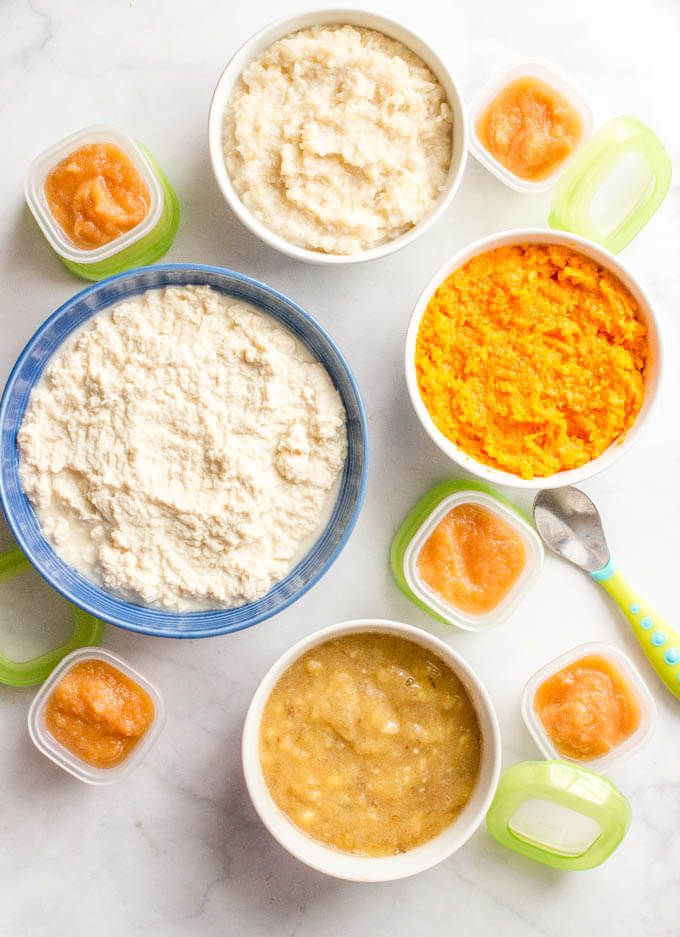
Combination feeding is all about finding the right balance between breastfeeding and bottle feeding using pumped milk or formula. This is going to vary by baby and by family, based on your specific variables. Here are a few example scenarios:
- A mother works outside of the home full-time. When she is away, her baby gets formula from a bottle and when she is home, the baby breastfeeds; it works out to be a 50-50 split between breast and bottle-feeding.
- A mother mostly breastfeeds, but when she runs errands or takes care of her elderly relative, her partner gives the baby a bottle of formula.
- A mother mostly bottle-feeds but still nurses her baby to sleep every night.
There are so many ways to do combination feeding! The beauty is that you get to decide what works best for you.
As you start experimenting and getting more experience feeding your baby, it will get easier to figure out what balance of bottle-feeding and breastfeeding you and your baby need.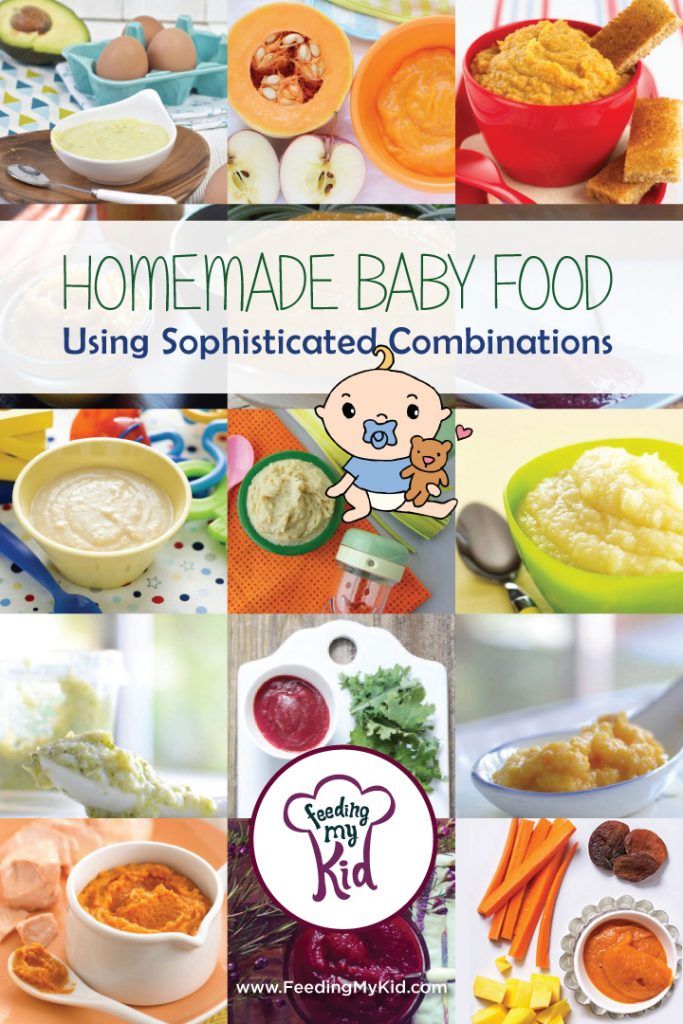
How much milk does my baby need?
Figuring out how much bottled milk to give your baby requires a bit of math. The average 1 to 3-month-old baby consumes 25 ounces of milk per day over eight to 12 feedings, so start with that and adjust as you get to know your baby.
So, say your baby eats 10 times per day: Dividing 25 ounces by 10 feedings is 2.5 ounces per feeding, so each of the bottles would be about 2.5 ounces.
When you nurse, there's no need to track how much they get. Here's how your baby will let you know that they are done breastfeeding:
- Falling asleep at the breast and staying asleep when you take the nipple out of their mouth
- Declining to re-latch
- Showing open, relaxed hands. Look at your baby's hands when they are done nursing. If they are clenched into fists they are likely still hungry, but if they are relaxed and open, they are likely full.
For week-by-week feeding guidelines, check here. Remember, every baby is different, though. For specific recommendations for your baby, check with your pediatrician.
For specific recommendations for your baby, check with your pediatrician.
How do I start bottle-feeding?
When introducing a bottle to your baby, there seems to be a golden window between four and six weeks. Earlier than four weeks can cause nipple confusion, which may make them prefer a bottle over the breast because drinking from a bottle is easier.
It's worth noting that for cases when bottle feeding needs to be introduced earlier, some lactation consultants recommend using special newborn slow-flow nipples anytime you bottle-feed—even beyond the newborn phase—to restrict the flow of milk so that babies need to exert a similar level of effort for both bottle and breast.
In The Motherly Guide to Becoming Mama , Sharen Medrano, IBCLC, writes, "If the baby does need to be fed pumped milk or formula, know that there are other ways to feed a baby besides a bottle! Medicine cups, shot glasses, syringes and even spoons can be used to give milk to a baby. Just put the spoon (for example) right up to the baby's lips, offer slowly, and they'll start to eat. This will lead to a better transition to the breast when you move to breastfeeding. Be sure to feed them slowly, though, giving small amounts at a time and allowing them to swallow completely before offering the next sip."
Just put the spoon (for example) right up to the baby's lips, offer slowly, and they'll start to eat. This will lead to a better transition to the breast when you move to breastfeeding. Be sure to feed them slowly, though, giving small amounts at a time and allowing them to swallow completely before offering the next sip."
(See? There are just so many ways to do combination feeding!)
But you don't want to wait too long before giving that first bottle. Introducing a bottle later than six weeks risks having the baby refuse the bottle because they have grown fond of breastfeeding.
When you do give the first bottle, if possible, ask your partner or a friend to feed your baby their first bottle. They are more likely to take it if they don't think mama is around to feed them.
How do I get started with pumping?
If you're choosing to supplement bottle feeding but still want to use your own milk, pumping is a good option.
When you pump, you have the option to do both breasts at the same time or one breast at a time. What you choose will likely depend on why you are pumping and when you last fed your baby.
What you choose will likely depend on why you are pumping and when you last fed your baby.
For example, if you will be away from the baby for a period of time and are pumping to maintain your supply and bring milk home, you will probably choose to pump both breasts. If you are home with the baby and they have just nursed on the left side only, you may choose to then pump the right side to increase your supply or to add some milk to your freezer stash.
Be sure to consult your pump's instruction materials to confirm that you're operating the pump correctly and that the flanges are optimally positioned for you.
When you're done pumping, follow the manufacturer's instructions for cleaning the pump and accessories. If your baby is younger than 3 months old or has specific health concerns, your baby's provider may advise sterilizing the equipment between uses, so be sure to ask.
How often you pump will depend on why you are pumping, so there will be a lot of variation here. The most important thing to know, though, if you want to maintain your milk supply, is to try to pump as frequently as your baby eats.
The most important thing to know, though, if you want to maintain your milk supply, is to try to pump as frequently as your baby eats.
Breast milk is made on a supply-and-demand system, so the more you pump, the more milk you will make.
If you will be exclusively pumping, or away from your baby for a period of time, pump as frequently as the baby eats—about every two to three hours. This will maintain your supply and help prevent clogs and engorgement.
If you are pumping once per day to increase your freezer stash, you might try to pump in the morning, as many moms find that they have the most milk early in the day.
Mamas who exclusively pump will generate anywhere from 19 to 30 ounces of milk per day (though this can vary a lot). If you pump eight times per day, you can expect anywhere from 2.5 to 3.75 ounces per pumping session (and again, your own amounts may be different).
How do I store breast milk?
If you are going to give your pumped milk to your baby within the next three to eight days, you can simply keep it in the fridge. If you plan to store it longer, you can freeze it. In cases where you plan to store the breast milk for later, it's recommended that you refrigerate or freeze the milk immediately after pumping to ensure maximum freshness down the road.
If you plan to store it longer, you can freeze it. In cases where you plan to store the breast milk for later, it's recommended that you refrigerate or freeze the milk immediately after pumping to ensure maximum freshness down the road.
Here's how long pumped milk can be stored:
- Room temperature: 4 hours. Keep covered.
- Cooler bag: 24 hours. Keep ice packs in contact with milk, and avoid opening the cooler.
- Refrigerator: Three to eight days. Store in the back of the fridge. Clean hands, pump and pumping surface will increase shelf life.
- Freezer inside refrigerator: 2 weeks. Store in back, away from sides.
- Separate freezer: 3 to 6 months. Store in back, away from sides.
- Deep freezer: 6 to 12 months. Store in back, away from sides.
How do I start feeding with formula?
If you need to go the formula route, do so with confidence. Formulas are getting better all the time and are highly regulated, so they are perfectly safe and healthy for your baby.
There are tons of options out there. Some moms choose organic formulas, as they want to be extra careful about pesticides. Some mamas are even sourcing formulas from European countries since they don't include synthetic ingredients like those found in the United States (note that this option can be quite expensive). Your pediatrician can give you guidance on what the best formula for your baby is.
Once a bottle of formula has been prepared, it should be stored in the refrigerator and used within 24 hours. Once the baby has eaten from the bottle, though, it should be discarded within an hour.
Can I combine breast milk with formula in the same bottle?
It's okay to combine breast milk and formula in the same bottle—it doesn't have to be one or the other.
There are a few reasons a mother might choose to do this: to increase the milk volume of a feed or to stretch out her supply of pumped milk over a few feedings.
When you combine pumped milk and formula in a bottle, don't worry about the ratio—just combine as much of each as you have, up to the total number of ounces you're going to feed your baby (see ounce guidelines above). There's no magic formula for how much of each.
There's no magic formula for how much of each.
When preparing the bottle, make the formula first and then add in the breast milk. Breast milk should not be used instead of the water used to make formula—this can cause dangerous health problems for the baby.
One last note: Once pumped milk has been mixed with formula, it must be used within 24 hours, or within an hour after the baby has started drinking from the bottle—bacteria enters the bottle as the baby eats and can make the milk start to turn if left for too long.
It may take a period of experimenting to figure out exactly what's right for you and your baby, and that's okay. As with all areas of parenting, feeding your baby can be highly complex. Ultimately, you must trust yourself and your decisions. Your baby will be fine because they have you. That is what matters most.
A portion of the article has been excerpted from The Motherly Guide to Becoming Mama.
For mamas who are using combination feeding, these are our favorite products to make nourishing your baby a breeze:
Shoppable
$49. 99
99
Nanobébé is the only line that’s totally up to the task of combo feeding. This Complete Feeding Set includes all that you need for bottle-feeding from newborn days through early toddlerhood—along with a natural, mom-like feel that will make the move from breast to bottle easy on everyone. (Also easy on everyone? These bottles are super simple to clean and sanitize!) Use code MOTHERLY for 20% off your order.
Lorem ipsum dolor sit amet, consectetur adipiscing elit. Suspendisse imperdiet.
Lorem ipsum dolor sit amet, consectetur adipiscing elit. Suspendisse imperdiet.
Lorem ipsum dolor sit amet, consectetur adipiscing elit. Suspendisse imperdiet.
We independently select and share the products we love—and may receive a commission if you choose to buy. You've got this.
Mixed infant feeding: how to start and introduce | Scheme and diet, menu for mixed feeding
Co-author, editor and medical expert - Klimovich Elina Valerievna.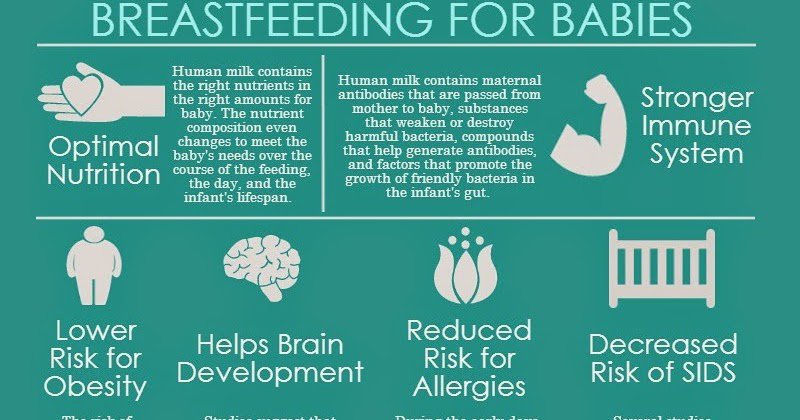
Number of views: 62 694
Date last updated: 09/22/2022
Average read time: 4 minutes
, which means switching to mixed feeding. It is recommended to make a decision on the transfer of a newborn to mixed feeding together with a pediatrician who will help you choose the right mixture.
Contents:
When do mothers switch to mixed feeding?
How to organize mixed feeding?
When do mothers switch to mixed feeding?
1. Lack of own milk
In some cases, even if the mother puts the baby to the breast on demand, the child may still remain hungry and gain weight poorly. This is often evidenced by loud crying after eating. In this case, experts speak of hypolactia, when milk production is reduced due to a hormonal disorder.
The “wet diaper” method will help to make sure that the baby really does not have enough milk. Do not put "diapers" on your baby and count the number of his urination in one day. From two weeks of age to six months, the result is evaluated as follows: if you counted 12 or more wet diapers, then you have nothing to worry about, 8–10 wet diapers indicate that lactation has decreased, 6 or less - the child does not have enough milk, and urgent action should be taken.
From two weeks of age to six months, the result is evaluated as follows: if you counted 12 or more wet diapers, then you have nothing to worry about, 8–10 wet diapers indicate that lactation has decreased, 6 or less - the child does not have enough milk, and urgent action should be taken.
Tip! Today there are many ways to increase lactation, but if they do not help, you should consult a pediatrician who will choose the right formula for supplementary feeding.
2. Lack of calories
Some mothers think that their milk is not nutritious enough. Most often, they come to such conclusions by expressing clear milk with a bluish tinge. But it cannot be nonnutritive or nutritious. Milk is “rear”, saturated white, thicker and fatter (for a child, this is “food”), and “front”, liquid with a bluish tint (“drink”).
Tip! If the amount of urination is normal, but the baby is not gaining weight, then you need to think about whether your baby is getting "hind" milk. To do this, offer him only 1 breast during 1 feeding.
To do this, offer him only 1 breast during 1 feeding.
3. Coming to work
Some mothers have to reduce the number of feedings after going to work. And their first impulse is to switch to mixed feeding. But you should always remember that the best food for a child is mother's milk. If you want to go to work, try to prepare for this in advance. Make a "strategic stock" of breast milk in the freezer so your baby always has food, even when you're not around.
Tip! If you plan to go to work when your baby has started to receive complementary foods, then try to organize meals so that complementary foods are given to him in your absence. So you will have the opportunity to reduce the amount of formula or defrosted in his diet
Up to the content
How to organize mixed feeding?
Mixed nutrition has its own characteristics, which are very important for a nursing mother to know.
Basic rules for mixed feeding:
- The timing of the introduction of complementary foods depends on the amount of breast milk the baby receives.
 If it is 50-70%, then it is administered as with breastfeeding (at 6 months). If less than 50% of breast milk is present in the baby's diet, then complementary foods can be introduced at the age of 5 months.
If it is 50-70%, then it is administered as with breastfeeding (at 6 months). If less than 50% of breast milk is present in the baby's diet, then complementary foods can be introduced at the age of 5 months. - Always offer the breast first. Only if you see that the baby is not full, and the breasts are empty, then give him a mixture. It also helps increase lactation. The mixture should be introduced gradually. On the first day - 10 ml / 1 time, the second - 10 ml / 3 times, the third - 20 ml / 3 times. Increase the portion, bringing it to the norm.
- Only the breast should be given at night and formula should be avoided. This is due to the fact that from 3 to 8 am, prolactin is actively produced, which is responsible for lactation.
- Feed according to schedule (every 3-4 hours) and breastfeed on demand.
- Keep water boiled and utensils and formula sterile. You need to cook right before eating.
- Use a spoon instead of a bottle for complementary foods.
 Then you can avoid breast rejection.
Then you can avoid breast rejection. - Remember that mixed-fed babies should be given water, as dehydration can lead to poor digestion.
Follow these simple rules and try to keep your baby breastfed for as long as possible. Your milk, even though it's not your baby's only food, contains invaluable trace minerals that will keep your baby healthy and strong.
Back to Contents
The information in this article is for reference only and does not replace professional medical advice. For diagnosis and treatment, contact a qualified specialist.
Mixed feeding of a baby: how to organize it correctly, when to introduce complementary foods and other rules
What is the difference between mixed and artificial feeding
When to switch to mixed feeding of a baby
How to organize mixed feeding
How to feed a newborn with mixed feeding: schedule
How much should a baby eat
How to choose a bottle for a newborn
When to introduce complementary foods with mixed feeding
When breast milk substitutes take up 2/3 of the baby's total food, this is called artificial feeding. If the mixture and mother's milk is 50 to 50 - this is a mixed type of nutrition. It is preferable to artificial, but you need good reasons to switch to it.
If the mixture and mother's milk is 50 to 50 - this is a mixed type of nutrition. It is preferable to artificial, but you need good reasons to switch to it.
1. Baby born prematurely
The pediatrician may prescribe mixed feeding if the baby was born small or premature, if the mother is sick, taking medication and temporarily interrupts feeding, or there is not enough milk.
2. Mom does not have enough milk
Olga, a mother of two children, faced a lack of milk. She told Lisa.ru that from three months to less than two years she fed her youngest daughter with one breast - there was too little milk in the second. I had to supplement my baby with formula. “There is nothing wrong with that, if you don’t stop breastfeeding completely,” says Olga. “We must fight with all our might to save it.”
Do not miss
-
Do not miss
How to properly express breast milk with a manual breast pump
3.
 The child is slowly gaining weight
The child is slowly gaining weight Yuliya, a mother of three, says that this was the case with her first child. The pediatrician was worried that at the age of five weeks the baby was “behind the schedule”, and the doctor recommended a combination of breastfeeding and artificial feeding. “Times have changed. Now doctors are more likely to advise on how to establish breastfeeding, rather than prescribe a mixture, ”says Yulia.
When it comes to a newborn, it is best to do without formula for the first two or three weeks of life if possible. Let the baby get used to the breast, and the mother will establish lactation. At the age of one month, it is still worth first making every effort to establish breastfeeding.
When exactly to offer formula
Pediatricians advise supplementing only after attachment, when the baby has sucked both breasts, even if there is very little milk. And do not give the mixture immediately, so that the baby does not lose the motivation to “extract” milk in the usual way.
It is best to start formula feeding in the morning. Until the baby's stomach has adapted to the new regimen, allergies to the mixture or digestive problems may occur. During the day, it will be easier for you to track it.
Do not miss
-
Don't miss
5 Causes of Breastfeeding Pain (and the Right Ways to Solve the Problem)
The mixture must be of suitable age and composition. There are cow, goat, soy milk products and many others on the market. It is better to choose your own after consulting with a good doctor. If the baby’s body does not even accept the recommended food, it is worth carefully switching to another.
Many people are concerned about the mixed diet. If we summarize all the recommendations, then it is worth breastfeeding on demand, supplementary feeding - according to the schedule at the same time, but no more than five feedings per day.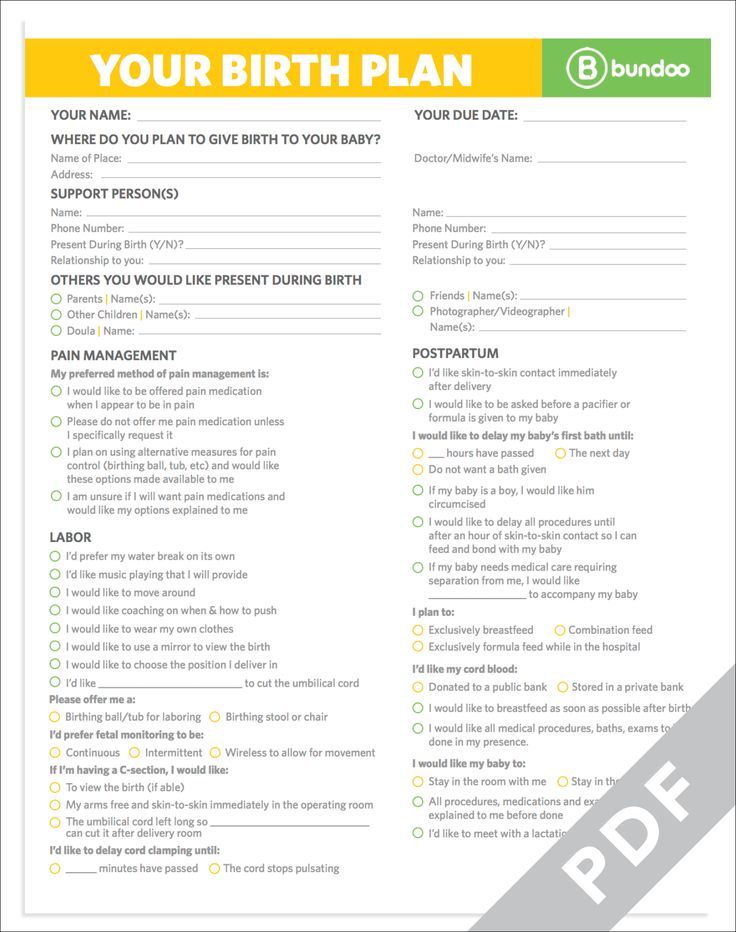 And in the evening and at night - only mother's milk. See the table for an example.
And in the evening and at night - only mother's milk. See the table for an example.
| Time | Type of feeding |
| 06:00 | Blend |
| 09:00 | Blend |
| 12:00 | Blend |
| 15:00 | Blend |
| 18:00 | Blend |
| 21:00 | Mother's milk |
| 00:00 | Mother's milk |
| 03:00 | Mother's milk |
Always remember the important rule of mixed feeding: the formula has no expiration date. Bacteria get into it very quickly, so you need to do it immediately before feeding and not stock up "for future use."
The daily requirement of an infant is individual. It depends on the weight, appetite, nutritional value of mother's milk or the composition of the mixture. Therefore, you can focus on the figures below, taking into account your personal situation. There are many formulas for calculating the total need for food, here is one of the variations.
There are many formulas for calculating the total need for food, here is one of the variations.
- Baby age from 1 to 10 days. If weighing less than 3200, multiply age in days by 70. If weighing more than 3200 g, multiply age by 80.
- Child over 10 days old but under 2 months old. He needs food in the amount of 20% of his body weight.
- Children 2 to 4 months of age require 1/6 of their body weight.
- 4 to 6 months - 1/7 body weight.
- Babies 6 to 12 months old need 1/8 to 1/9 of their body weight.
Received a total figure. We divide it by the number of feedings, and find out how much the baby needs to be satiated in one go. Well, the amount of milk actually received can be calculated using control weighings during the day.
If, according to all indications, he does not have enough food, plus there are signs of malnutrition (tears, whims), then all possible ways to establish breastfeeding should be considered. And, perhaps, resort to complementary foods.
And, perhaps, resort to complementary foods.
There is an opinion that the disadvantage of mixed feeding is the possible refusal of the baby from the breast in favor of a bottle, because it is easier to suck from it. However, fears are not always justified, and some children, on the contrary, spit out the pacifier and demand their mother. And do not get hung up on the number of bottles, it is much more important to choose the optimal shape of the pacifier for the baby. When you decide which pacifier your baby will recognize, you can buy a complete set.
By the way, if there is a tendency to refuse the breast, you can try to choose a round nipple with a wide base and a minimal puncture, so that the child will grab it and apply force when sucking.
There is also an optional SNS feeding system that simulates breastfeeding. Thin tubes are brought to the mother's nipples, through which milk flows from the tank. There is a vacuum in the system so that the newborn sucks with effort.



